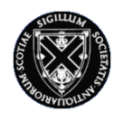Scottish Archaeological Internet Reports (SAIR)
Society of Antiquaries of Scotland, 2012. (updated 2023) https://doi.org/10.5284/1017938. How to cite using this DOI
Data copyright © Society of Antiquaries of Scotland unless otherwise stated
This work is licensed under the ADS Terms of Use and Access.
Primary contact
Society of Antiquaries of Scotland
National Museums Scotland
Chambers Street
Edinburgh
EH1 1JF
Scotland
Resource identifiers
- ADS Collection: 310
- DOI:https://doi.org/10.5284/1017938
- How to cite using this DOI
A Later Prehistoric Settlement and Metalworking Site at Seafield West, near Inverness, Highland
Cressey, Michael and Sue Anderson
with contributions by Ann Clarke, Trevor Cowie, Fraser Hunter, Andrew Heald, Katherine Eremin, Melanie Johnson, Ruth Pelling, Ian Mack and Gerry McDonnell. Illustrations by George Mudie, Alan Braby and Shelly
Scottish Archaeological Internet Reports 47 (2011)
0903903523
Abstract: Construction in 1996 at a major retail development site close to Inverness, Highland resulted in the destruction of two known cropmark sites. One set of cropmarks was found to be associated with a Bronze Age log-boat burial site and the results of the ensuing excavation are published elsewhere (Cressey & Sheridan 2003). The excavation of a second area of cropmarks forms the subject of this publication. The archaeological remains consisted of a series of negative features, post-holes and annular ditches which form parts of at least nine separate structures of a later prehistoric unenclosed settlement. A mould fragment indicated Late Bronze Age sword production in the vicinity. A palisaded enclosure produced a copper-alloy brooch that is a rare find for the region. Evidence of copper-alloy objects and metalworking from a smelting hearth and slags show that the occupants were of some status. Some of the structural and artefactual evidence compellingly points to an in situ ironworking workshop. A large cache of smithing charcoal found in association with a smelting hearth was radiocarbon dated to 180BC-AD70 and represents one of the few dated in situ Iron Age ironworking episodes in Scotland.
Download report
| Scottish Archaeological Internet Report 47 | 2 Mb |







